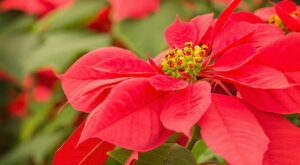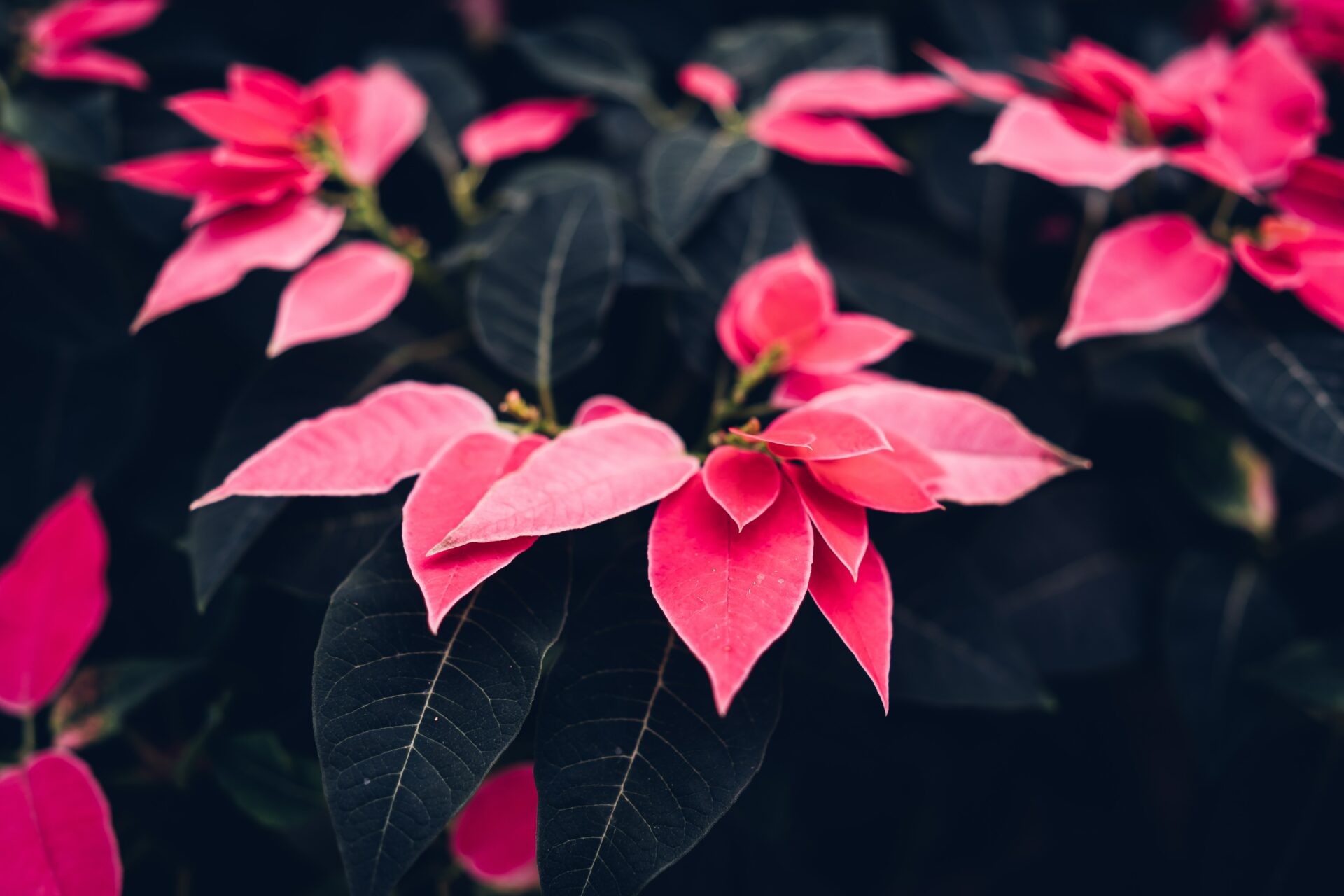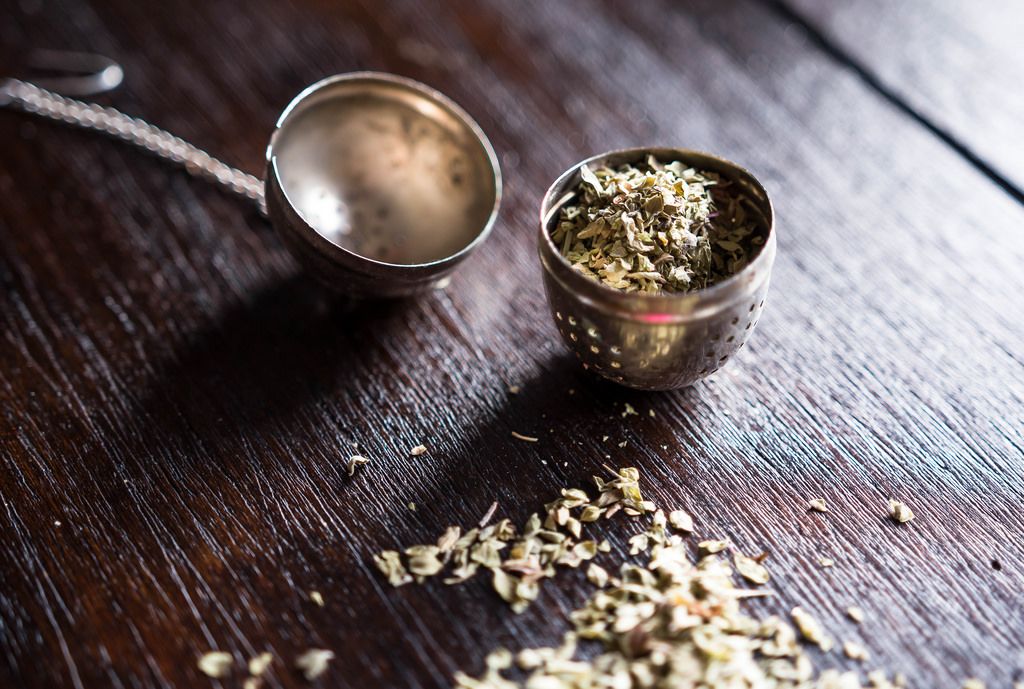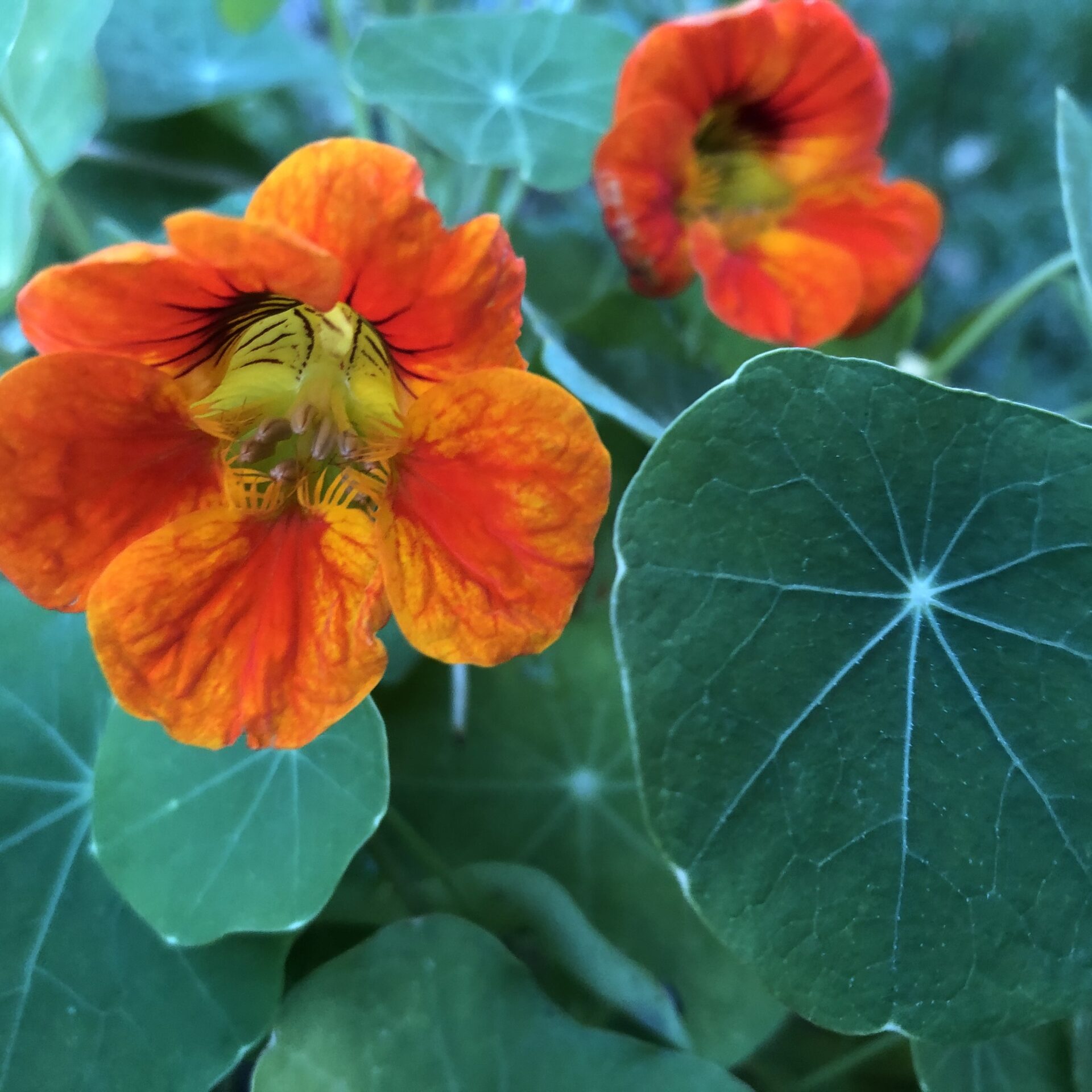Father Winter has blown in! The ground is freezing and all the energy that was once in the branches retreats to the roots. And as all green seems to vanish for a few months in the northern hemisphere, we turn to our indoor plants to exert vitality into our lives. Accompanying these green friends, we find the Christmas plant. I don’t think we are alone in feeling no December would truly be complete without the vibrant poinsettia. December’s flower. So what is poinsettia’s story?
seems to vanish for a few months in the northern hemisphere, we turn to our indoor plants to exert vitality into our lives. Accompanying these green friends, we find the Christmas plant. I don’t think we are alone in feeling no December would truly be complete without the vibrant poinsettia. December’s flower. So what is poinsettia’s story?
History
Poinsetta or Cuetlaxochitl is native to Mexico. While we recognize them as indoor dwellers, in Mexico they grow wild and free as shrubs. Sometimes they reach 10ft tall! And before it was ever a symbol in Christianity, it was revered by the ancient Aztecs.
From dyes for cosmetics and textiles to medicinal use, the poinsettia was versatile in Aztec culture. When the 17th century Spanish conquest came around, priests felt the color of the blooms where appropriate for nativity scenes and started using them during the Christmas holiday.
In 1825, a botanist by the name of Joel Roberts Poinsett fell in love with the plants while he was down in Taxco. He immediately sent some back to his home in South Carolina and upon his arrival, began propagating the poinsettias for botanical gardens. The poinsettia was later first sold by a man named Robert Buist and in 1833 the plant was officially named after botanist Poinsett.
In the 1920s, the Ecke family became the ones to jumpstart the poinsettia industry, commercially making it what it is today.
Growing tips for the flower of December

Since many of us will be keeping/growing the plant inside as indoor company (given many of our locations), exposing the plant to long nights is a key growing tip. Although it looks like the red leaves are the blooms of the plant, they actually produce small, almost imperceptible round blossoms. They sit in the center of the red bracts (what the leaves are called).
As a flower of December, Poinsettias love to be kept around 19-21 C degrees during the day and around 15-18 degrees C at night. They are not cold tolerant and do not like large fluctuations in temperature so keeping them inside is best. Avoid windows with lots of light and cool drafts during the night so they don’t experience that intense fluctuation.
Although the windowsill is not the best option, they do love at least 6 hours of indirect sunlight (8 is great!). Placing them just a little ways away from that sill will allow them to flourish. Water the plant regularly during the winter (non-dormant phase). Once the plant reaches its dormant phase it will start to lose leaves – It is not dead, don’t throw the deary out! Simply water it less frequently (every 2 weeks is good) and wait for the magic to sprout once again.
Folklore and Symbolism
From the ancient Aztecs to Christianity, the poinsetta or cuetlaxochitl (in Mexico) has stories in many cultures. In a Mexican story, a young girl was weaving a blanket for a poor family on Christmas. As the blanket began to take shape, the girl started to notice how misshapen and full of mistakes it was. She was so embarrassed that she didn’t want to bring it to the square where poor families would receive their gifts.
However, when a woman told the young girl that it didn’t matter what it looked like, it was a gift that came from the heart the girl ran home and grabbed the blanket. And although the townsfolk laughed and jeered at the blanket when she presented it to the family, she ignored them and knew the family was grateful. Just then, the blanket started transforming into a beautiful pattern with red and white poinsettia leaves lining the border. The magical moment didn’t stop there either. Soon the entire square was full of the beautiful plant, reminding everyone of the joy that comes from giving.
The Aztecs saw the beautiful plant as a symbol of purity and it is often representative of the Christmas season. During this time, the gift and presence of the poinsettia brings good cheer, celebration and wishes of mirth.
Use in medicine
Although poinsettia’s properties can be harsh and toxic in excessive quantities, the plant has been used medicinally for those with respiratory issues and as an antimicrobial. There is also evidence that a weak bathe decoction is used as a gallactogue and to ease swollen breasts.
In Eastern medicine, poinsetta is used for cooling the blood, reducing swelling or to stop bleeding. It is mentioned that it is great for swelling if there is some type of blood stagnation involved. As for the focus on the lungs, western medicine notices poinsetta as a broncho-dialator, a supporter of asthma symptoms and helpful for colds and flus (when the respiratory tract is involved).
Flower remedy
As a true cheer around December holidays, the flower essence of poinsetta may be helpful to bring about some of those feelings that surface around that time. Specifically hope. The essence supports the encouragement of feeling hope – Hope on a grand scale. Hope for humanity and the rest of the world. This is a collective feeling. An essence needed when spirits need lifting and one needs reminding that we are all in this together, and we can do it.
And so we wrap up the flowers of the month with one that symbolizes true joy, peace and hope. The gorgeous pop of color always lights up our hearts and leaves a glimmer in our eyes. If you are gifted one of these luminous lovelies this year, we suggest trying your hand at having it accompany you through the winter. With the drab colors outside, we can assure you the brilliant red, greens, whites and pinks will bring warmth to your soul and keep your spirits up through the chilly nights.







